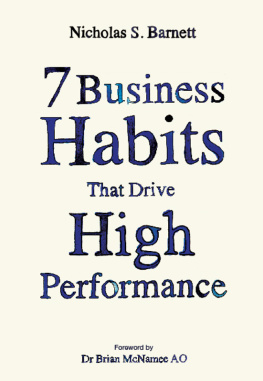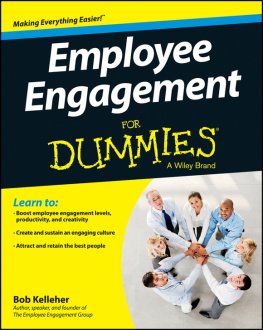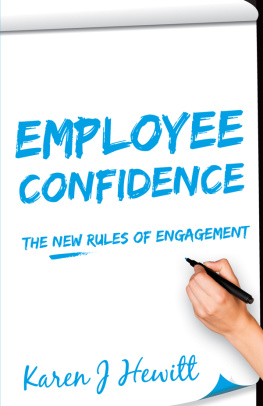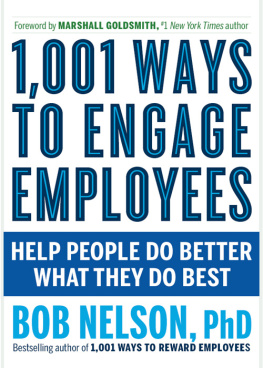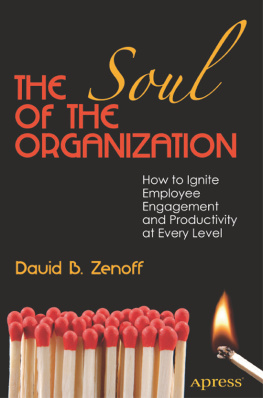The Performance-Engagement Model:
Managing the Five Personality Profiles in the Workplace
Introduction
When youre responsible for employees or teams (management/HR), you must manage two main areas for productivity impact:
1. EFFORT: Performance/Results/Work (WHAT THEY DO)
2. EXPERIENCE: Engagement/Environment (HOW THEY FEEL)
What are some of the factors that impact effort?
Ineffective meetings
Computer problems
Unclear priorities
Co-worker drop-ins
Technology
Distractions
Smelly food from neighbor
Fatigue
Etc. etc. etc. etc. etc. etc.
What are some of the factors that impact the employeeexperience?
Confidence in abilities
Control in daily work
Nature and quality of the job
Access to training
Career development
Opportunities for growth
Communication
Manager feedback
Ultimately, the factors that lead to high PERFORMANCE andthe factors that lead to high ENGAGEMENT are different. Being independentvariables, I use a matrix to help managers assess an employee's levels ofengagement and performance. If you combine high and low aspects of thesedimensions, you can gauge your employees and teams composition.
In this diagram, we've got four quadrants that describenearly all the employees in a typical workplace. I won't claim that it covers everyone,but from personal experience, I can guarantee you that 95% of your employeeswill fall into one of the categories:

Matrix 2010 Laura Stack.
Campers
Campers are the classic low-engagement/low-performanceemployees. These people can be deadwood who do little more than fill a chair orwait for retirement. They vary from unengaged to actively disengaged tocouldn't care less. They come to work to get a paycheckand Heaven forbid youshould ask them to go one iota beyond their job description or stay late duringcrunch time.
How to Spot a Camper
I call disengaged low performers "Campers" becausethats what they do: they camp in a chair and huddle in place, waiting for itto be all over. They arent very concerned about fellow employees, the companyin general, or the people they're supposed to be serving.
If you've ever seen the character of Wally in the comicstrip Dilbert, you've seen the classic Camper in action...if you cancall it that. All he ever does is walk around with his coffee mug. That'stypical; Campers do as little work as possible to get by. Often, they'reactively disengaged from the company rather than merely unengaged, which meansthat even when they're not really trying to, Campers are sabotaging yourorganization.
One quick caveat: be careful about who you classify as aCamper, because in many cases, brand new employees may seem to combine lowengagement with low performance the way that Campers do. But that's acceptable,because they're still learning their jobs. They simply don't know the ropeswell enough yet to be highperforming, and aren't familiar enough with thecompany to be highly engaged. Give new people a little time to prove where theyfit into the Matrix before you assume they're Campers.
How a Camper Can Impact YourTeam
If you have Campers on a team, the team will suffer: no ifs,ands, or buts about it. At the very least they'll slow you down, but dedicatedCampers are much worse: they're not just non-productive in and of themselves,they infect everyone else, since their coworkers have to do all the work theywon't. This is bound to cause strain. They may not be doing it maliciously, buttheyre doing it.
A Camper can be death to your organization. The analogiesare endless: they're the bad apple that spoils the bunch, the anchor that dragsyou down, and the virus that ruins a well-functioning organism. Campers act asbottlenecks in workflow, because they'll get their work done when they darnwell please. They depress other people, and can infect them with their apathy,souring otherwise good employees and lowering their levels of engagement. Oh,they may not deliberately hurt your organizationbut they really dontcare if they do or not. All they care about is drawing a paycheck and making itto five o'clock, to Friday, to the end of the yearand finally to retirement.
How to Handle a Camper
You can't just ignore a Camper, or they'll ruin you.Personally, I'd recommend that you fire them if you can. Oh, give them a chanceto clean up their act first; they may surprise you by becoming a more engaged,competent employee (sometimes people just need a little push-start).
How to Coach the Camper
The only alternative to firing a Camper is to put acorrective action plan in place, in hopes that you can somehow engage them.You'll need to sit down with them, make it clear that they're on probation, andlet them know why. Tell them flat-out that their behavior can't continue, andthen lay out your action plan step by step. Give them a fair amount of time toturn things aroundthirty days is goodand make it clear that they won't have ajob if they don't. Be sure to set mileposts and check to see that they're met.
If you're very lucky, the Camper will start working theirway toward productivity; and if they do, be sure to encourage their growth. Butmore realistically, they wont even try, or they'll just give up on you and goelsewherewhich is fine. Either way they'll still be a problem, but they'll besomeone else's problem.
When trying to counsel a Camper, you have to keep one thingin mind: subtlety is wasted on them. Be blunt: approach them and tell themyou're going to let them go if they don't start turning things around. Lay outyour corrective action plan point by point, and make absolutely sure theyunderstand and sign off on everything. Set mileposts and check to see if they'remeeting them. This is one of those rare cases where micromanagement may benecessary.
A month should be long enough to turn things around. Ifthere's noticeable change, great! If not, then you'll have to do what's bestfor the team and the company.
In Conclusion
Campers have to be dealt with immediately and with finality,one way or another, or they'll drag everyone else down to their level.
If you just can't change the Camper and you have no say interminating them, you can't just sit there chewing on your frustration. Thereare ways that you can isolate them from the rest of your organization. Don'tgive them anything important to do, and keep them away from your other teammembers if at all possible. After all, quarantine is a tried-and-true method ofprotecting the uninfected from a disease.
Cheerleaders
While social talent and enthusiasm make up for a lot, theyaren't everythingand Cheerleaders are the classic workplace example. They lovethe company, but they don't produce results, which makes them something of aliability. Even so, in my book a lowperformance Cheerleader beats ahigh-performance Defector hands down. Cheerleaders have already sold themselveson the company; now you just have to help them become better workers.
How to Spot a Cheerleader
Cheerleaders are usually fun people to have around, becausethey simply love the company. Maybe it's the money, or the health benefits, orthe free gym membership, or the environmentor more likely, it's the wholepackage. They're enthusiastic and dedicated, because they're working in a superplace and they know it. You can count on a Cheerleader to willingly take onjust about anything you ask them to do.









